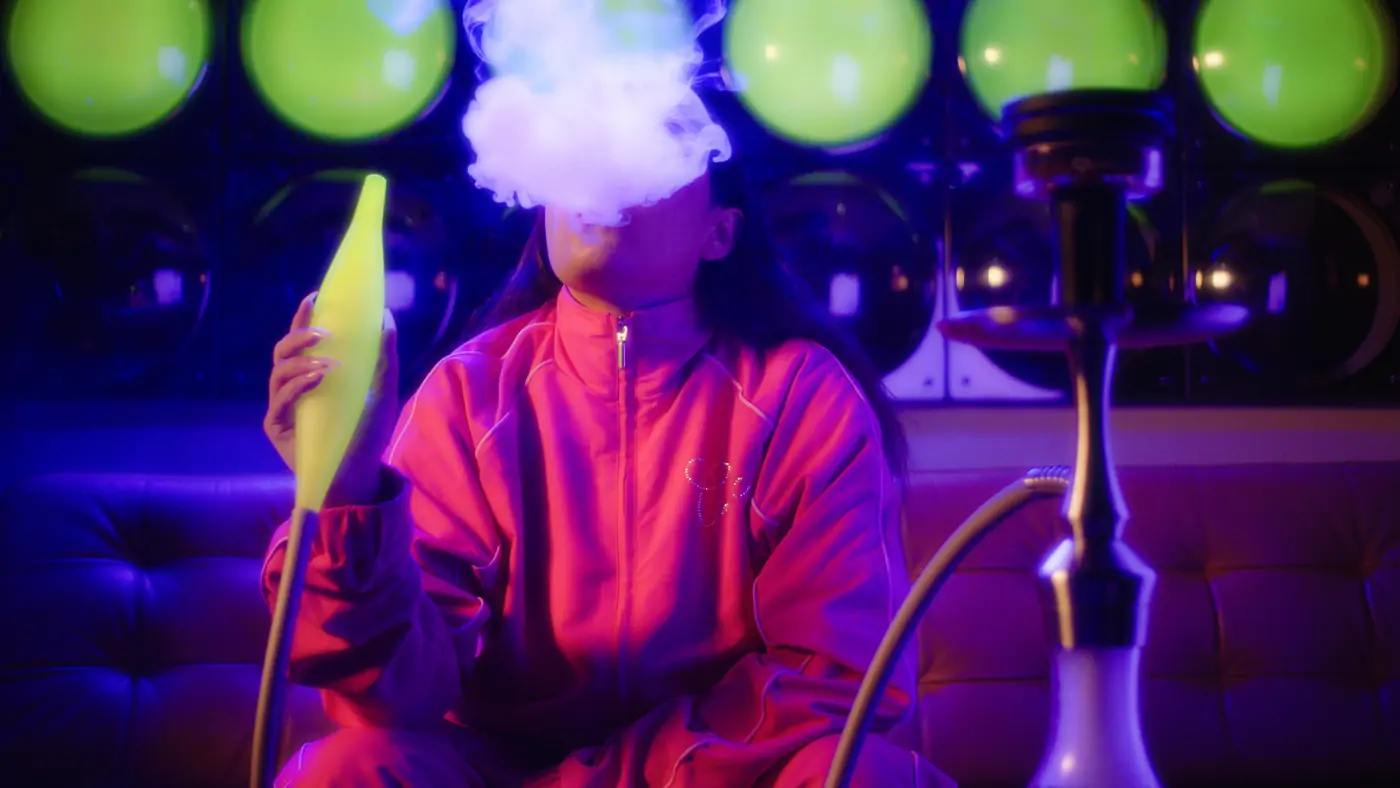The work of Marseille-based artist and director Sara Sadik is an immersive mosaic layered with fiction, documentary, video, gaming, performance, and thought-provoking world-building. This engaging fusion represents a radical departure from the staid traditions of the art experience to which we are accustomed.
Sadik’s deeply personal inspiration draws from an eclectic array of influences: the pulsating passion of French rap, the vivid aesthetics and intricate storytelling of Manga, the vast universe of sci-fi, and the interactive nature of video games. Her practice is openly rooted in her personal experiences and cultural heritage, particularly her French Maghrebi culture.

Photography by Émile Samory Fofana
The core of my stories, the documentary side of it, always based on real-life stories and experiences
Sara Sadik
The Maghrebi diaspora, primarily composed of individuals of African descent from Algeria, Morocco, and Tunisia, has been an integral part of French society for decades. Despite their significant contributions, the Maghrebi community often faces persistent stereotyping and de-symbolism, reflecting broader issues of racism, Islamophobia, and social exclusion within France.
The French media frequently portrays Maghrebi individuals negatively, often associating them with crime, violence, and unemployment. The Institut Montaigne 2020 study reveals significant discrimination against individuals with Maghrebi-sounding names in the French job market. The 2021 law against “Islamist separatism,” while presented as a measure to uphold secularism and combat extremism, has been criticised for reinforcing stereotypes, fueling discrimination against the Muslim community, and deepening social divisions rather than fostering inclusivity.
Growing up, Sadik absorbed her community’s experiences, especially her brother’s struggles and resilience as a French Maghrebi man. Through her work, Sadik delves into the experiences of French Black and Brown men, exploring themes of love, friendship, loneliness, and social issues such as racism, Islamophobia, and working-class struggles. Sadik’s groundbreaking work, XENON PALACE CHAMPIONSHIP, which opened at FACT Liverpool earlier this month, takes an innovative approach by transforming the hookah lounge—an often-overlooked sanctuary for men struggling with identity and societal triggers—into a central, magical theme.
The project imagines a secretive hookah lounge where a group of friends escapes the outside world and encounters fantastical Xenons emerging from the smoke.

Installation view at FACT Liverpool.
Photo by Rob Battersby
This immersive installation signifies a “safe space” for individuals facing prejudice and cultural isolation to unite, which is critically lacking for Black and Brown young men today. It elevates the hookah lounge to a cultural and political icon, paying homage to this vital yet underappreciated habitat. It highlights its role as a sanctuary where these individuals can escape, unite, and find solidarity, fully expressing themselves without external pressures.
Sadik’s creative expression is different, fresh, and authentic. She embraces technology’s capabilities to explore notions of brotherhood and belonging, shedding light on the intricate relationship between alienation, ambition, and legacy; their experience becomes the art. It invites, engages, and teaches, illuminating the circumstances of the French Maghrebi diaspora. Her work has not gone unnoticed, with exhibitions in London, Berlin, Paris, Rome, New York, and more.
Ultimately, her work reflects her blend of experiences, unearthing hidden meanings through raw, unfiltered storytelling. Guided by her dedication to upliftment, she taps into the pulse of French Maghrebi contemporary culture, focusing on characters who morph into surreal avatars of self-expression. They strive for personal growth of mind, body, and soul while battling the ironclad challenges of an isolated life. Sadik reminds us that art can be both a mirror and a window regardless of the medium.
We managed to catch up with the Marseille-based artist and director to learn more about her practice and exhibition at FACT Liverpool.
Hi Sara, thank you for speaking with us. Could you introduce yourself to those who might not be familiar with your work?
Sara Sadik: Hi, I’m Sara Sadik, a soon-to-be 30-year-old French artist and director based in Marseilles. I work primarily with video and occasionally with performance.
Can you share some early moments from your journey into the arts and explain what motivated you to pursue a career in this field?
Sara Sadik: I started studying Art in high school, where I earned my diploma in Applied Arts. It wasn’t a field I was into, and being an artist wasn’t something that was in my mind at all at this time. I chose a specific course because it was the only one offered, and it was just a technique I used to gain admission to a great high school in the city centre. The logical follow-up after getting this diploma was to go to the Fine Arts School of Bordeaux, where I was admitted on my second try. It wasn’t until my second year there that I figured out that I wanted to be an artist.
I never felt any connection to the Arts in general, and I was just following a scholarship path a bit blindly, without knowing why I was there until I came across [Mohamed] Bourouissa’s work and something clicked – maybe I can do something in this field, maybe I have a purpose to be here. I felt like my identity, my culture; my story had its place in Contemporary Arts.
From that moment, I spent all four years at the school writing fiction, shooting, and creating so many video works. Video was the thing that was accessible to me because I was able to learn it on my own without any prior skills, thanks to YouTube tutorials. At first, I used a simple camescope from my school and a green screen that I replaced with Photoshop montages. It was such a cheap setup that I used for years. It allowed me to make so many videos without any money. It gave me so much freedom.
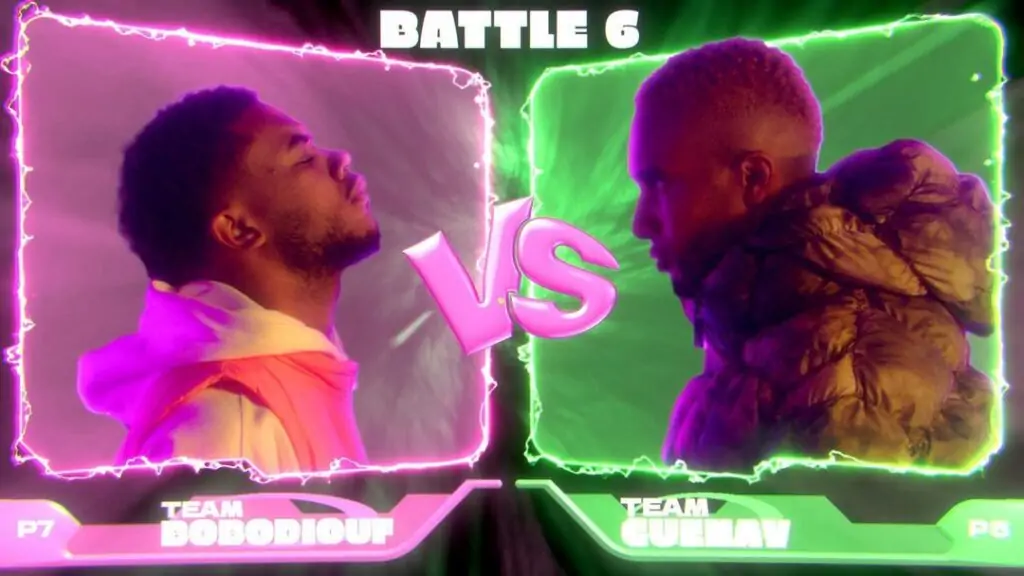
Courtesy of the artist
Your practice compellingly blurs the lines between digital and real worlds, merging fiction, documentary, video, and performance. Drawing from video games, anime, science fiction, and French rap, your work confronts stereotypes and desymbolisation of the Maghrebi diaspora in France. Can we delve into your practice, inspirations, and central themes?
Sara Sadik: All my works are based on French Black and Brown men, and I like to write based on figures. I worked on the lover figure, the fighter, the lone-wolf. From this, there are many themes that emerge, either straightforward or implied, such as love, friendship, loneliness, or social experiences like racism, Islamophobia, working-class struggles, and everything that arises from these.
This is the core of my stories, the documentary side of it, always based on real-life stories and experiences. Then comes the fictional part, for which I draw inspiration from TV, video games, anime and manga, sci-fi, French rap, and everything that is part of me as a person, but also cultural symbols of the men I work with. Whether it’s for the narrative structures or the visuals that I create, everything is nourished by this and serves as an homage. In my work, I like to add different dimensions, layers and references that can be grabbed in different ways depending on the viewer.
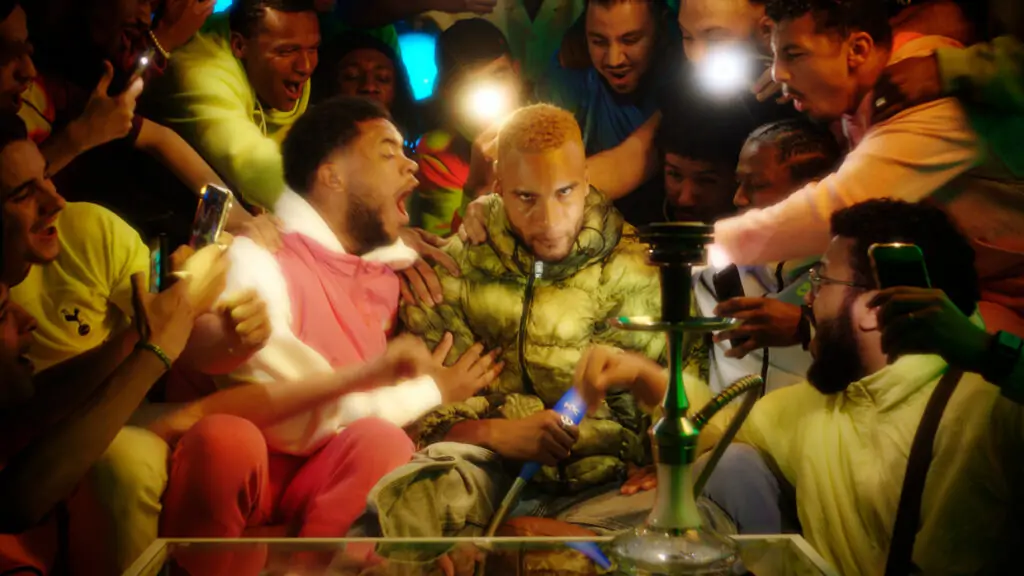
Commissioned by LUMA Arles and Google Research Initiative Courtesy of the artist
Many of your works construct and deconstruct narratives. How do you approach storytelling in your art?
Sara Sadik: The narrative structure I use in my films kind of follows a similar process to video games and manga. I always begin with a main character starting at point A, and all the writing focuses on character development: what is the goal he wants to achieve and what is the journey towards it. All of my characters experience a mental and/or physical transformation, like a coming-of-age phenomena. Their construction is inspired by the concept of the body-as-weapon and transformation, which is common in anime, often motivated by a wish for vengeance or the need to prove yourself and gain confidence in a world that you feel alienated from.
How does your personal experience as a member of the Maghrebi community inform your practice?
Sara Sadik: I grew up with my little brother with whom I have a strong relationship, so this has helped me become a good listener and understand the difficulties of being a French Maghrebi man in France. I don’t have the exact same experiences, but I have witnessed it all my life. I also share a similar culture with the men I work with. We are French from the African diaspora, having kind of a double culture, and belonging to the Internet and TV generation, so it’s easy for me to create work which is true to them.

Installation view at FACT Liverpool.
Photo by Kieran Irvine
How do you see your work engaging with or challenging the broader French and global art landscapes, particularly in their treatment of marginalised communities?
Sara Sadik: The journey I have had regarding my practice has allowed me a lot of freedom in terms of subjects, themes or visuals. The work that I was making while still in school was about stories of people and references that weren’t represented in Contemporary Art. I didn’t have any self-comparison and I was able to do whatever I wanted, to make work without any restriction on what it should look like or what mould to fit into, especially in the French Contemporary Art scene.
I think that to this day that’s something that is the essence of my work, and I’m proud to have kept true to myself during these years, despite some teachers telling me that what I was making wasn’t Art. But it’s still a tricky subject, that is reflected in the way my work is shown and received. My work was first shown in Switzerland, Belgium, Germany, Netherlands and England before I was invited to show it in France. Same with the public commissions, the talks, the institutional solo shows… I think that it says a lot about all of it.
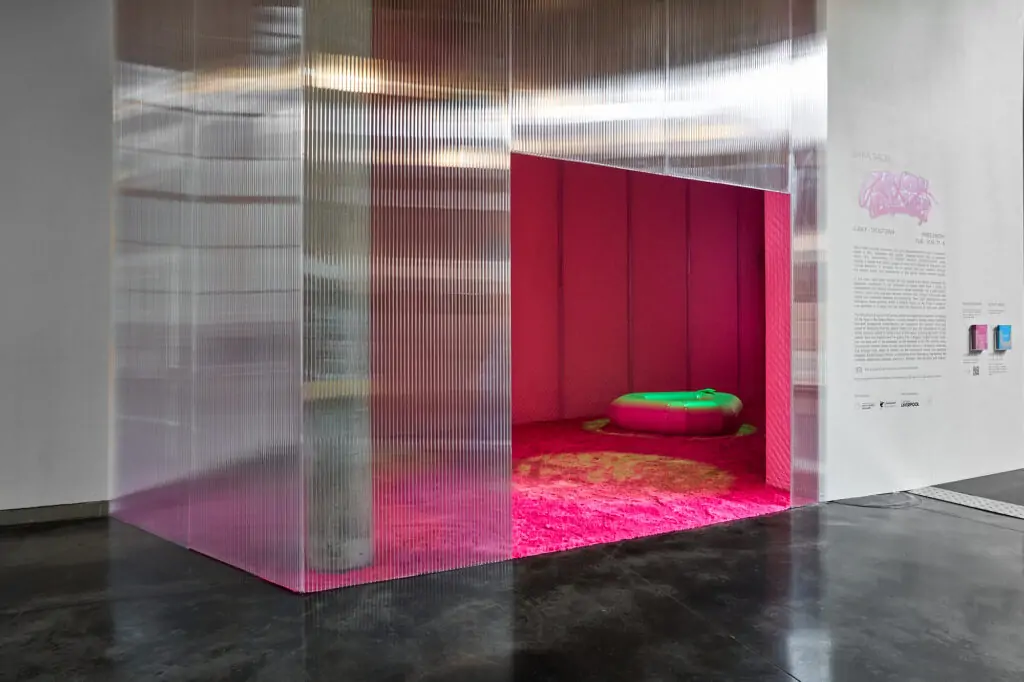
Installation view at FACT Liverpool.
Photo by Rob Battersby
Your upcoming exhibition at FACT Liverpool, alongside artist R.I.P. Germain, showcases your XENON PALACE CHAMPIONSHIP (2023). Can you tell us more about the exhibition and how it came about?
Sara Sadik: The story of XENON PALACE CHAMPIONSHIP is about a secret magical hookah lounge where a group of friends go to escape the outside world. In this hookah lounge, there are fantastic creatures called Xenons that emerge from the smoke. When you enter the space, you enter the XENON PALACE hookah lounge, you enter a new dimension, a secret space where you are not supposed to be allowed in.
Visitors can interact with the work every 2-3 minutes when the film switches to a video game. It is important for me to «protect» my characters, and to give limits to interactivity. This is why the result of the competition is scripted and the way visitors play has no impact on the story or the characters. But I still wanted to bring interactivity into this film to make it as immersive as possible. I wanted to give the impression of being inside this moment with friends, in this secret hookah lounge, to which we are suddenly given privileged access.

Installation view at FACT Liverpool.
Photo by Rob Battersby
For the hookah controllers, I’ve worked with Google engineers to create them. I wanted to use hookah handles and I chose the Bazooka ones because it was perfect in terms of ergonomy and manipulation. We added a gestures recognition system in them that allows you to control the characters actions with your hand gestures. It’s my most ambitious project and I think that’s why there are so many elements that give life to my worldbuilding within the film and the installation.
Can you talk us through the essence and significance of XENON PALACE CHAMPIONSHIP (2023)?
Sara Sadik: All my projects are tributes to stories, people, social phenomena. The main theme about XENON PALACE CHAMPIONSHIP is the notion of “safe space”. I think that there is still a huge lack of safe spaces for black and brown young men, and men, in our society and one of them is hookah lounges. It’s both a cultural and political symbol thus I wanted to make a tribute to it and create a story based on it.
I feel it’s so important to create these types of spaces, and that’s also what all my work is about. Create worlds where these mens can be themselves openly, share what’s in their mind and simply exist at their fullest.
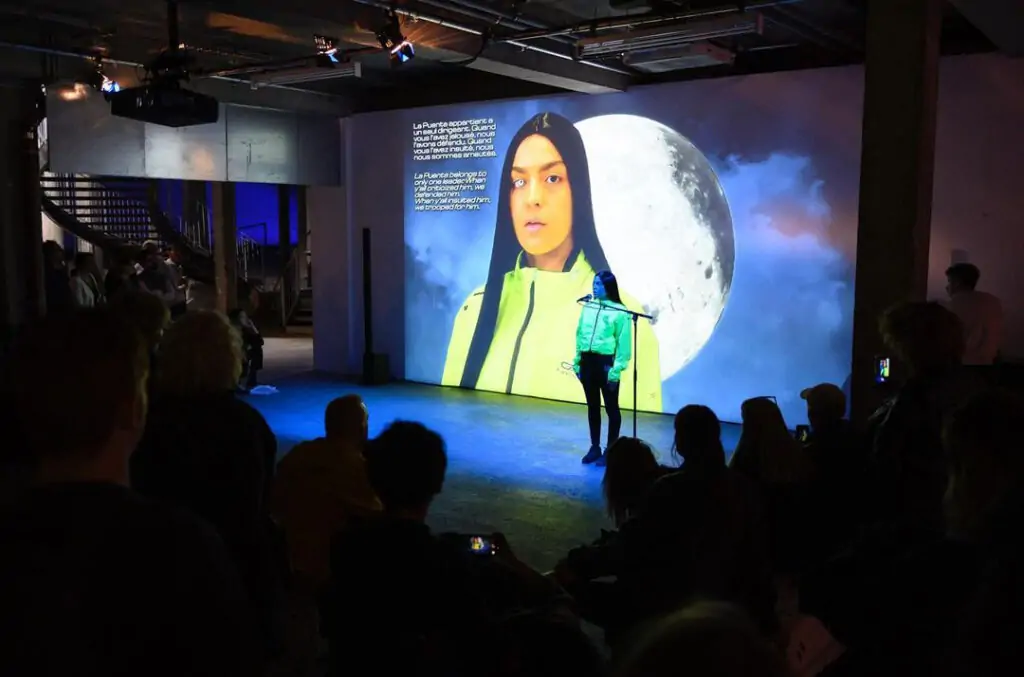
Image courtesy of the artist
Given the rapid advancements in digital media and technology, how do you see your practice evolving in the future? Are there any new themes or techniques you are particularly excited to explore in your upcoming projects?
Sara Sadik: One key element in all my projects is the shooting techniques which are always different and adapted to the story and the worldbuilding. So that’s the thing for which I’m super excited. I always like to find innovative ways to work with new, specific cameras or shooting techniques. I like to use cinema cameras, action cams, thermal cameras, hunting cameras, game engines — you name it, I want to try everything. Technology allows me so much freedom in this production process and I’m always looking for new technology to use.
Sara Sadik’s XENON PALACE CHAMPIONSHIP is on display at FACT Liverpool until Sunday 13 October 2024.
https://www.instagram.com/sarasadikofficiel
©2024 Sara Sadik


